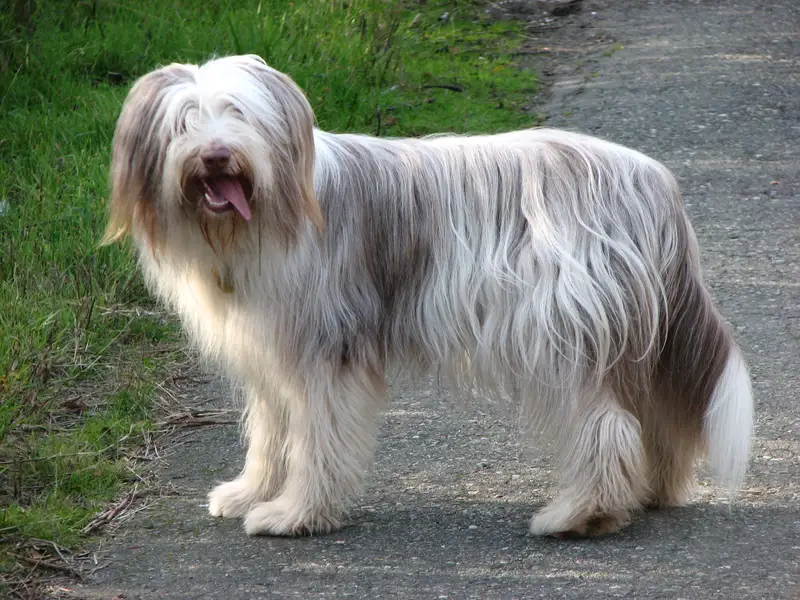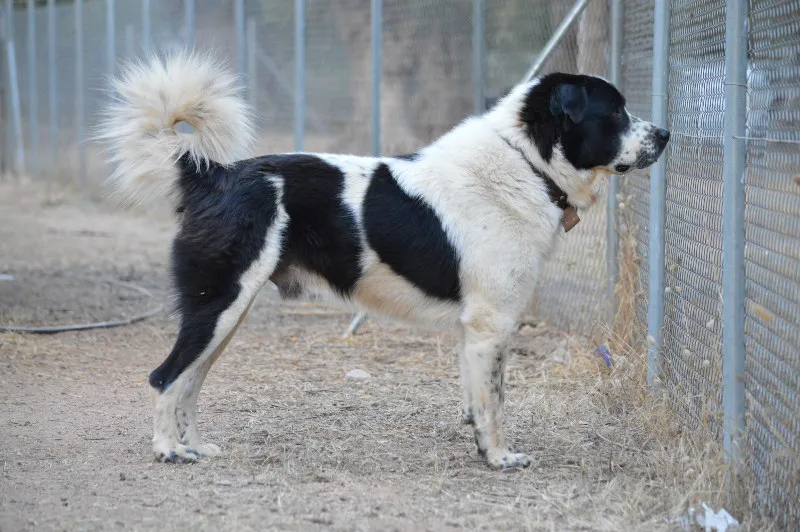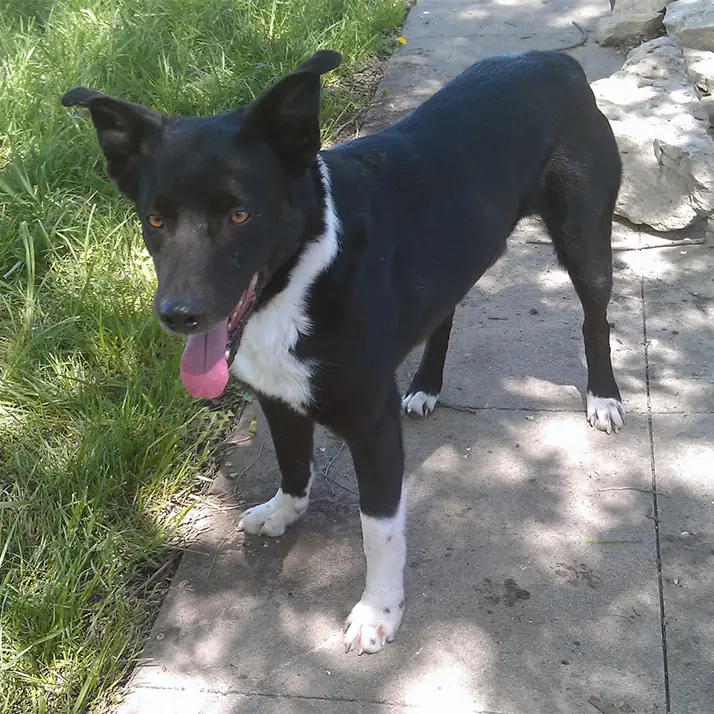Schapendoes
The Schapendoes, or Dutch Sheepdog, is a medium-sized, friendly, and intelligent breed known for its herding abilities and agility. They thrive in active homes and excel in dog sports.
Overview
🐕Breed Overview
✨Key Traits
💡What Makes Schapendoes Special
The Schapendoes is characterized by its intelligence and versatility, making it an excellent candidate for various dog sports and activities. Their herding instincts are strong, and they often display a natural ability to manage livestock.
This breed is also known for its affectionate nature, making it a wonderful family companion. Their lively personality means they require regular exercise and mental stimulation to stay happy and healthy.
The Schapendoes is also relatively easy to groom, with a coat that requires regular brushing to prevent matting. Their adaptability to different living environments makes them suitable for both urban and rural settings, provided they receive adequate exercise.
The Schapendoes, also known as the Dutch Sheepdog, is a medium-sized breed originating from the Netherlands, specifically the Drenthe province. With a rich history as a herding dog, the Schapendoes was essential for managing livestock on farms, showcasing its versatility and intelligence. This breed is characterized by its long, thick fur, small hanging ears, and a friendly, high-spirited demeanor.
Schapendoes are known for their affectionate nature, making them excellent family companions. They thrive in active households and excel in dog sports such as agility and flyball, where their agility and intelligence shine. Regular exercise is crucial for this breed, requiring at least 60 to 90 minutes of activity each day to keep them physically and mentally stimulated.
Their independent nature can present training challenges, but with consistent positive reinforcement, they can learn a variety of commands and tricks. The Schapendoes is adaptable to different living environments, though they do best in homes with outdoor space. Their grooming needs are moderate, requiring regular brushing to maintain their coat's health.
Overall, the Schapendoes is a lively and engaging breed that brings joy and companionship to active families.
🎉Fun Facts
Schapendoes are often described as 'clownish' due to their playful nature.
The Schapendoes is known for its agility and excels in dog sports.
They have a unique beard and mustache that adds to their charm.
This breed was nearly extinct after World War II but has made a remarkable comeback.
Breed Characteristics
Family & Friends
Good Behavior
Get Up & Go
Household Harmony
Temperament & Personality
✨Key Traits
🐕Core Temperament
The Schapendoes is known for its friendly and affectionate temperament. They are lively and intelligent, making them excellent companions for active families.
While they are not aggressive, they can be protective of their home and family if needed. Their independent nature means they may not always follow commands immediately, but they are eager to please and enjoy engaging training sessions.
Proper socialization from a young age is crucial to ensure they are well-adjusted and comfortable around strangers and other animals.
💫Personality Profile
The Schapendoes is a lively and affectionate breed, known for its friendly demeanor and intelligence. They are highly social dogs that thrive on interaction with their families.
Their playful nature makes them great companions for children, and they often form strong bonds with their human family members. While they are generally friendly, proper socialization is essential to ensure they are well-adjusted around strangers and other animals.
Their independent streak means they may not always follow commands immediately, but they are eager to learn and enjoy engaging training sessions. Overall, the Schapendoes is a delightful breed that brings joy and energy to any household.
🔊Vocal Tendencies
The Schapendoes has a moderate barking tendency, typically barking to alert their owners of new arrivals or unusual sounds. They are not excessive barkers but will vocalize when they feel it is necessary.
Their vocalizations can include barking, whining, and playful sounds during playtime. Proper training and socialization can help manage their barking behavior, ensuring they are well-mannered in various situations.
Affection & Social Traits
Energy & Activity
Communication Style
Care Requirements
🏃♂️Exercise Requirements
Daily Exercise
The Schapendoes is an active breed that requires regular exercise to maintain its physical and mental well-being. Ideally, they should engage in at least 60 to 90 minutes of exercise each day. This can be broken down into several sessions, including walks, playtime, and structured activities.
They enjoy activities that challenge their agility and intelligence, such as agility training, flyball, and herding exercises. Puppies may require shorter, more frequent play sessions to accommodate their developing bodies, while senior dogs may benefit from gentler activities to prevent strain. Regular exercise not only helps manage their weight but also reduces the risk of behavioral issues stemming from boredom or pent-up energy.
Insufficient exercise can lead to destructive behaviors, anxiety, and obesity, making it crucial for owners to provide ample opportunities for physical activity.
Preferred Activities
🏠Living & Adaptability
Space Requirements
The Schapendoes is adaptable to various living environments, but they thrive in homes with ample outdoor space to run and play. While they can live in apartments, it is essential to provide them with daily access to parks or open areas for exercise.
A house with a secure yard is ideal, as it allows them to explore and engage in natural behaviors. Owners in smaller spaces should ensure they have a routine that includes regular outings to meet their exercise needs.
Lack of space can lead to frustration and destructive behaviors, so providing mental stimulation through toys and training is also important.
Climate Preference
🍲Feeding Guide
Schedule
Food Types
Portion Size
Special Nutritional Needs
The Schapendoes does not have specific dietary restrictions, but it is essential to provide a balanced diet rich in protein and healthy fats to support their active lifestyle. Owners should monitor for any food sensitivities and adjust their diet accordingly. Regular veterinary check-ups can help ensure that their nutritional needs are being met throughout their life stages.
✨Grooming Requirements
Grooming Overview
The Schapendoes has a long, thick coat that requires regular grooming to prevent matting and maintain its health. Owners should brush their dog's coat at least once a week, increasing the frequency during shedding seasons in spring and fall.
A slicker brush and a comb are recommended for effective grooming. Bathing should be done as needed, but over-bathing should be avoided to prevent dry skin.
Regular attention to the ears, nails, and teeth is also essential for overall health. The breed's facial hair should be kept clean to prevent irritation and matting.
Care Schedule
Brush weekly; bathe as needed; trim nails every 2-4 weeks.
Health Profile
⚕️Health Care
Regular veterinary care is essential for maintaining the Schapendoes' health and longevity. Routine check-ups, vaccinations, and preventive treatments can help identify and address health issues early. Owners should also be proactive in monitoring their dog's weight, dental health, and overall condition, as these factors can significantly impact their lifespan.
Health Issues Overview
⏳Average Lifespan
Genetic Factors
Genetics play a significant role in the Schapendoes' lifespan, with certain hereditary health issues being more prevalent in the breed. Responsible breeding practices, including health screenings for common genetic conditions, can help reduce the risk of inherited health problems. Potential owners should seek reputable breeders who prioritize genetic diversity and health testing to ensure a healthy puppy.
Living Conditions
The Schapendoes thrives in environments that provide ample opportunities for physical activity and mental stimulation. Regular access to outdoor spaces, such as parks or backyards, can significantly enhance their quality of life and longevity.
Social interactions with humans and other dogs are also crucial for their emotional well-being. A stimulating environment that includes playtime, training, and socialization can help prevent behavioral issues and promote a longer, healthier life.
🏥Common Health Issues
Hip Dysplasia
Warning Signs
🔬Diagnosis
X-ray examination by a veterinarian.
💊Treatment
Medication, weight management, and in severe cases, surgery.
📝Management Tips
Maintain a healthy weight, provide joint supplements, and avoid excessive strain on joints.
Elbow Dysplasia
Warning Signs
🔬Diagnosis
X-ray examination by a veterinarian.
💊Treatment
Medication and physical therapy.
📝Management Tips
Regular exercise and maintaining a healthy weight can help manage symptoms.
Allergies (Atopy)
Warning Signs
🔬Diagnosis
Allergy testing by a veterinarian.
💊Treatment
Antihistamines, corticosteroids, and topical treatments.
📝Management Tips
Identify and avoid allergens, and consider hypoallergenic diets.
🛡️Preventive Care
🔬Hip Evaluation
Hip Evaluation: Assesses the hip joints for dysplasia and other abnormalities.
📅 At 12 months and older, then every 1-2 years depending on the dog's health.
🔬Elbow Evaluation
Elbow Evaluation: Evaluates the elbow joints for dysplasia and other issues.
📅 At 12 months and older, then every 1-2 years depending on the dog's health.
🔬Allergy Testing
Allergy Testing: Identifies specific allergens that may affect the dog's health.
📅 As needed, especially if symptoms of allergies are present.
Training
🧠Intelligence & Trainability
💪Work Drive
The Schapendoes has a strong work drive, stemming from its history as a herding dog. They thrive on tasks that challenge their intelligence and physical abilities.
Engaging them in activities such as agility, obedience training, and herding exercises is essential to keep them mentally stimulated. Without sufficient mental engagement, they may exhibit boredom-related behaviors, such as chewing or digging.
Providing a variety of activities that cater to their natural instincts will help fulfill their need for purpose and keep them happy.
⚠️Training Considerations
The Schapendoes is an intelligent breed, but their independent nature can present training challenges. They may not always respond to commands as eagerly as more obedient breeds, requiring patience and consistency from their trainers.
Common behavioral challenges include stubbornness and a tendency to become easily distracted. To overcome these challenges, positive reinforcement training methods are recommended, focusing on rewards for desired behaviors.
Engaging training sessions that incorporate play and mental stimulation can help maintain their interest and motivation. Socialization is also crucial; exposing them to various environments, people, and other animals from a young age can mitigate potential behavioral issues.
📝Training Tips
Training a Schapendoes requires a balance of patience, consistency, and positive reinforcement. Start with basic obedience commands and gradually introduce more complex tasks. Use treats, praise, and play as rewards to encourage good behavior.
Short, engaging training sessions are ideal, as they help maintain the dog's focus and enthusiasm. Incorporating agility training or herding exercises can also be beneficial, as these activities align with the breed's natural instincts. Regular socialization with other dogs and people is essential to develop a well-rounded temperament.
Owners should be prepared for ongoing training throughout the dog's life to keep their skills sharp and their minds engaged.
History & Heritage
📜Origin Story
The Schapendoes originated in the rural landscapes of the Netherlands, particularly in the Drenthe province, where it served as a versatile farm dog. These dogs were integral to the agricultural lifestyle, assisting farmers in herding sheep and managing livestock.
Their adaptability to the local environment and the needs of farmers made them invaluable. However, the breed faced a significant decline during World War II, leading to a concerted effort by enthusiasts to preserve and revive the breed.
Notably, Pieter Toepoel, a Dutch author and martial arts pioneer, played a crucial role in re-establishing the Schapendoes. The breed's recognition by kennel clubs and its growing popularity in dog sports today reflect its enduring legacy as a beloved companion and working dog.
⏳Development History
The Schapendoes descends from a general type of farm and herding dog that was prevalent in the Drenthe province of the Netherlands. These dogs were not initially recognized as a specific breed but were known by various names and adapted to the local environment and work requirements.
In the 1870s, they began to be exhibited as domestic herding dogs. The breed faced near extinction during World War II, with only a few survivors left.
The Dutch Raad van Beheer recognized the breed in 1952, and the first breed standard was established in 1954. The Schapendoes is related to several breeds, including the Bearded Collie and the Old English Sheepdog, and has been recognized internationally by the Federation Cynologique Internationale since 1971.
🛡️Purpose & Historical Role
Originally bred as a herding dog, the Schapendoes was essential for managing livestock on farms in the Netherlands. Their primary role involved herding sheep, but they also assisted in various farm tasks, showcasing their versatility.
In modern times, the Schapendoes has transitioned into a popular participant in dog sports such as agility and flyball, demonstrating their intelligence and athleticism. They are also valued as family companions, known for their friendly and affectionate nature.
🏺Cultural Significance
The Schapendoes has a rich history as a working dog in the Netherlands, particularly in the Drenthe province. Historically, these dogs were essential for herding sheep and managing livestock on farms.
Their versatility allowed them to adapt to various roles, from farm work to companionship. The breed's near extinction during World War II highlights its importance in Dutch culture, as enthusiasts worked diligently to revive it.
Today, the Schapendoes is celebrated not only for its herding abilities but also for its participation in dog sports, showcasing its intelligence and agility. The breed's recognition by various kennel clubs reflects its significance in both historical and modern contexts.
Conservation Status
This breed is less common but has stable populations in certain regions.









